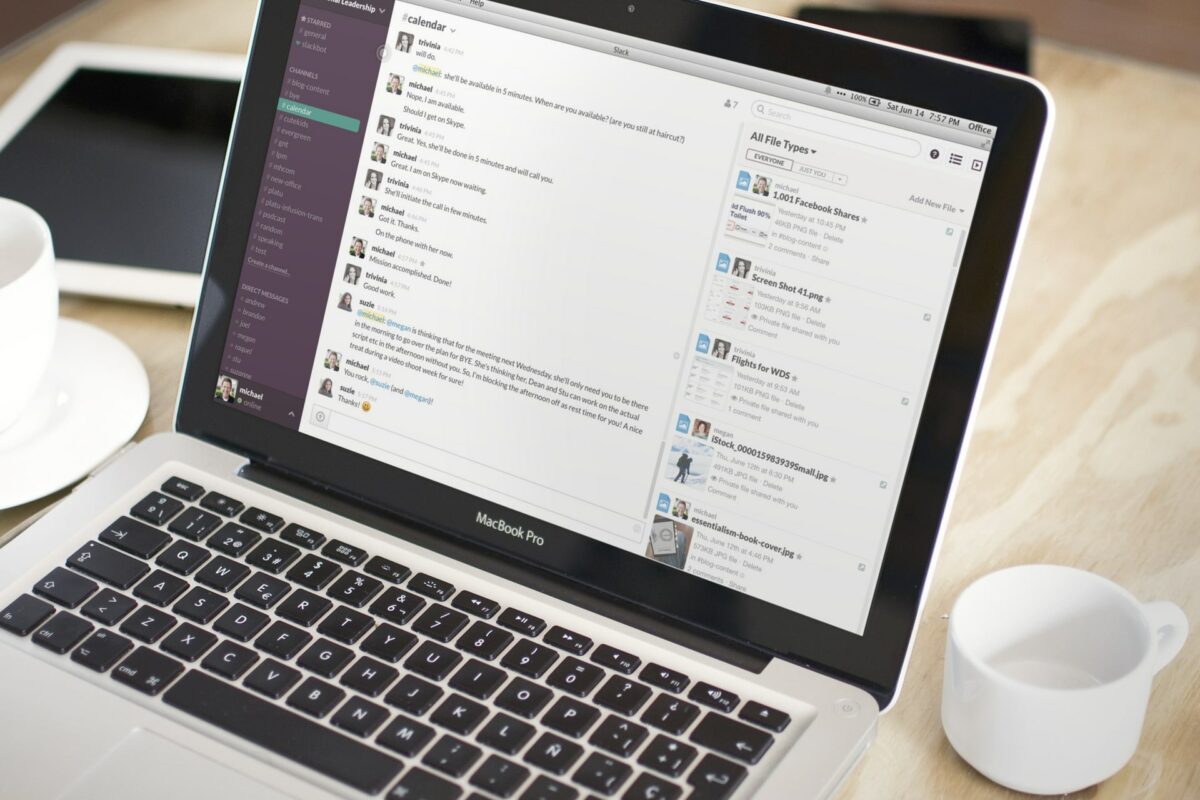Lousy communications is one of the biggest challenges any team faces. I can’t tell you how many times I’ve lost files, even whole conversation threads, in email. And no one likes triaging an inbox, even with a good system. So what if we had a better solution?
We do, thanks to a team of online video game developers.
After pulling the plug on an unsuccessful multiplayer game, the developers at Tiny Speck Inc.—now called Slack—turned their attention to fixing the communications problems that undermined their own efforts. And I’m glad they did.
It’s an Email Jungle Out There
We all know that email is out-of-control. I have a public email address and a private one, and even the private account has been getting unwieldy.
When I dug deeper into the problem recently, I discovered 83 percent of my messages were related to team communications. I don’t know about you, but I love email for what it does well—it’s just that team communication isn’t one of those things.
We’ve all felt the frustration of trying to keep up with complicated, disorganized email conversations—or the panic of lost files. We’ve all tried unsuccessfully using our inbox as a staging ground, workspace, to-do list, and so on.
Worse, as email gets crazier on us, we try other solutions to cope—instant messaging, chatrooms, project management apps—which have benefits of their own but which also fragment our discussions and workflow even further. Pretty soon it’s all like some overgrown tangle of weeds.
What to do? My friend Pat Flynn had the answer.
Slack to the Rescue
Pat suggested we try Slack, a communications and workflow app he’s been using for a few months now.
The concept is simple. It folds together all the functionality of email, instant messaging, file sharing, and more into one system that’s actually fun to use.
Instead of team communication about your projects and initiatives mixed up with random messages from friends, unrelated requests from clients, and funny cat memes from your aunt, you can keep it all separate. Even better, it’s highly searchable and fully integrated with your mobile devices.
You can set up conversations (“channels”) around certain projects or interests and keep all relevant parties on the team updated, swap and store files, even message team members individually as needed.
Think of it this way: Email is like a phone call to someone in another building. Slack is like a conversation with someone in the same room. The first is great for folks outside your team, but the other is ideal for the collaborative communication teams need to succeed—especially if everyone is working remotely.
My Experience So Far
I got my team on board immediately after checking it out. I sent an email saying I wouldn’t respond to emails or texts. If they wanted to reach me, I’d be on Slack. I also sent instructions for joining.
Some members were resistant, but it wasn’t long before we were all using it. One told me afterward that if you know how to send a Tweet or a text message, you can be up and running in a few minutes.
The result is that my incoming email is now less than 20 percent what it was, and the communication with my team has improved dramatically.
Right now we have ten team members involved in sixteen different channels. The setup was nearly instant and the structure came organically. We have channels for initiatives like webinars and my writing projects, for calendar and event coordination, and even for sharing cute pictures of our kids.
We’ve only been using Slack a little while, but the result is a virtual environment that feels like a large, open office with conversations churning on all the stuff that matters most. So far, it’s even been fun.
Five Tips to Get Started
If you want to quickly improve team communication and workflow, Slack is the ticket. Whether your team is already working in an office, or everyone’s virtual, here are five tips to get you started fast and effectively.
- Keep it direct. Have your team use their first name as their username, unless you have multiple folks with the same first name. The idea is to have a one-name identifier. They can add their full names to their profiles, along with their photos.
- Keep it tight. Only invite people you interact with on a frequent basis—usually this means your staff, direct reports, or key clients. Email or texting is fine for people outside this circle, but to maximize functionality and efficiency, keep the Slack team tight.
- Keep it focused. Only set up necessary channels. Use the default “General” until you start seeing a line of messages that should be segregated. Channels can be areas of focus—like administration, calendar, etc.—or specific projects, events, conferences.
- Keep it central. Start pulling all the relevant conversations, files, action plans, and decisions into Slack. It’s all searchable so if you start using it almost exclusively, you’ll have access to most of the key elements of your business within a few clicks and taps.
- Keep it everywhere. Download Slack to all your devices from the App Store or Google Play. You can use Slack via the browser interface if you want, but I prefer the Mac desktop app. (If you use Windows, you'll have to use a browser. There is not a dedicated Windows app.) I also use the iOS app on my iPhone and iPad. Everything stays instantly synched between all my devices.
My team and I have nowhere near tapped what’s possible with Slack. It can, for instance, integrate with all sorts of commonly used services like Twitter, DropBox, and Stripe. You can even use it with services like IFTTT or Zapier to forward emails to it or ingest RSS feeds. We're just getting started with this.
Like I said at the beginning, email still has its uses—and for some of them email is the best solution. But based on my experience so far, the best way to simultaneously manage your inbox and improve team communication is to save email for outside communication and use Slack for everything in house.
What's the most frustrating communications or workflow problem you and your team face?[uam_ad id=”46487″]
Disclosure of Material Connection: Some of the links in the post above are “affiliate links.” This means if you click on the link and purchase the item, we will receive an affiliate commission. Regardless, we only recommend products or services we use and believe will add value to our readers. We are disclosing this in accordance with the Federal Trade Commission’s 16 CFR, Part 255: “Guides Concerning the Use of Endorsements and Testimonials in Advertising.









